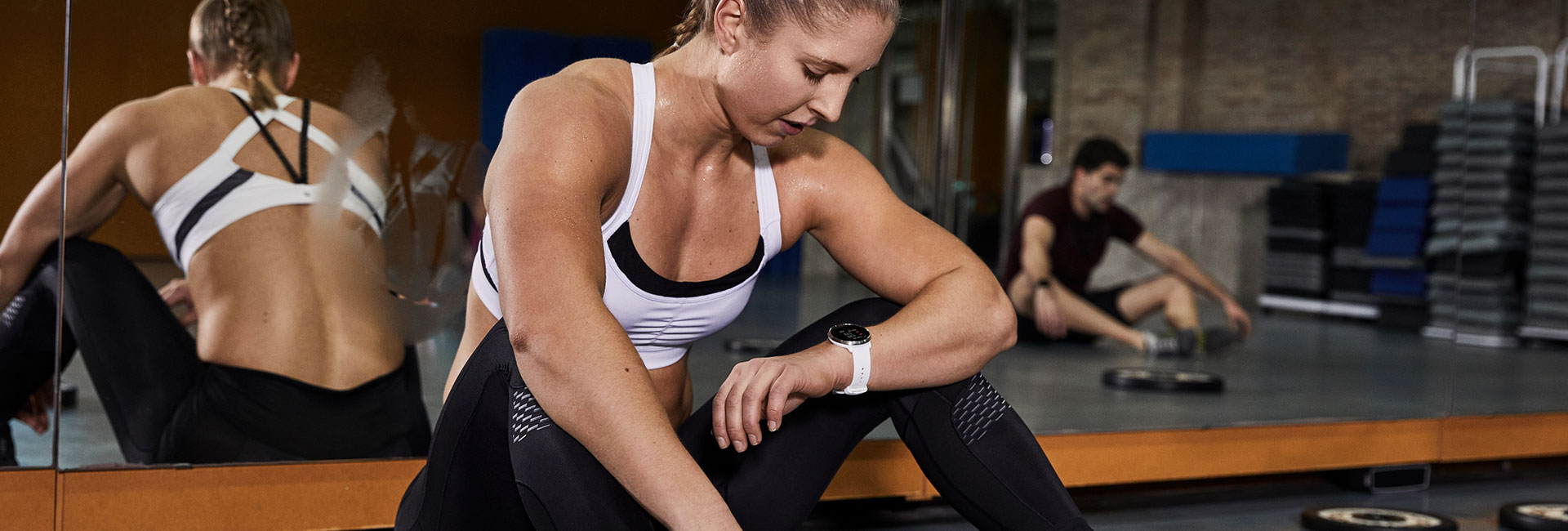Under-recovery among athletes and exercisers is more common than you’d think. Like many other athletes, I know that recovery from exercise is crucial and yet, I didn’t stop until I had no other choice.
When I finally did stop, it wasn’t really even my choice anymore – my body made that decision for me and said: Stop! Now!
I was in the middle of a hard, but exciting, training season with a lot of volume and high intensity. That training season ended up being short-lived as I was working out too hard, too often. I ended up in a state of under-recovery, which meant that an easy mobility routine (in the picture below) was one of the most intense sessions I was able to do for days.
Now I know that I should have stopped before it came to that. But, as many athletes know, it’s just so difficult to slow down when your workout plan tells you to turn up the intensity during the most important training season of the year.
Well, I learned my lesson: When your body and recovery data tell you to stop, you better listen.
I learned it the hard way but you don’t have to. To help you avoid ending up where I was, here are some of the warning signs of under-recovery which I should have taken seriously.
Morning anxiety
I usually wake up in the morning refreshed, already looking forward to my morning workout. While having breakfast, eager to get my sweat on, I also set goals for my evening workout. I would say I’m pretty motivated and training is often the highlight of my day.
Recently, however, I found myself feeling tired almost every morning. I wasn’t sleeping well at night and the Nightly Recharge status on my Polar Ignite stubbornly stayed in the red zone for several days in a row.
In the mornings, I would sit on the couch with a cup of coffee in my hand with a strange feeling of horror as I was thinking about how to get through the day and my workouts. More often than not, I was hoping I could take a rest day, (even when my previous rest day was yesterday).
At times, I did skip my morning workout to save some energy for the evening, which was definitely a smart move. In retrospect, a full day of rest wouldn’t have hurt at that point.
I thought maybe I just needed to push myself harder so I said to myself:
“Just four more workouts and then you can rest. You can do this!
“Only a few more weeks and you’ll get a break!”
Nothing feels like anything
I was so tired that I had to take two naps a day. Despite the exhaustion, my workouts were going okay, sometimes extremely well, but I wasn’t as enthusiastic about them as before. Quite the opposite – everything felt, well, blah.
After training, I spent the next night tossing and turning in bed for hours on end and the next morning pouring down coffee as my life depended on it, just to get myself going and make it through the day.
This went on for a while, until I (luckily) realized: I need to stop. Now.
Stop! But then what?
So, I stopped and made a plan to prioritize sleep and bring my stress levels down, both mentally and physically.
This time I decided to let data lead the way and I made a pact with myself that I would need a “good” “very good” or “excellent” Nightly Recharge score on my Polar Ignite for three days in a row before I’d get back to training.
Overall, it took me over a week to get my metrics back to even close where they had normally been and almost two weeks to get back to training. The time required to bounce back could’ve been as much as two months or years, so I feel I’m one of the lucky ones.
Now I’m training smarter, focusing on recovery more than before, and I listen to the signals my body is giving me and actually use the data my fitness watch offers.
Key lesson learned: It’s easy to fool yourself, but data doesn’t lie.
If you liked this post, don’t forget to share so that others can find it, too.
Or give it a thumbs up!
I like this article
Please note that the information provided in the Polar Blog articles cannot replace individual advice from health professionals. Please consult your physician before starting a new fitness program.





